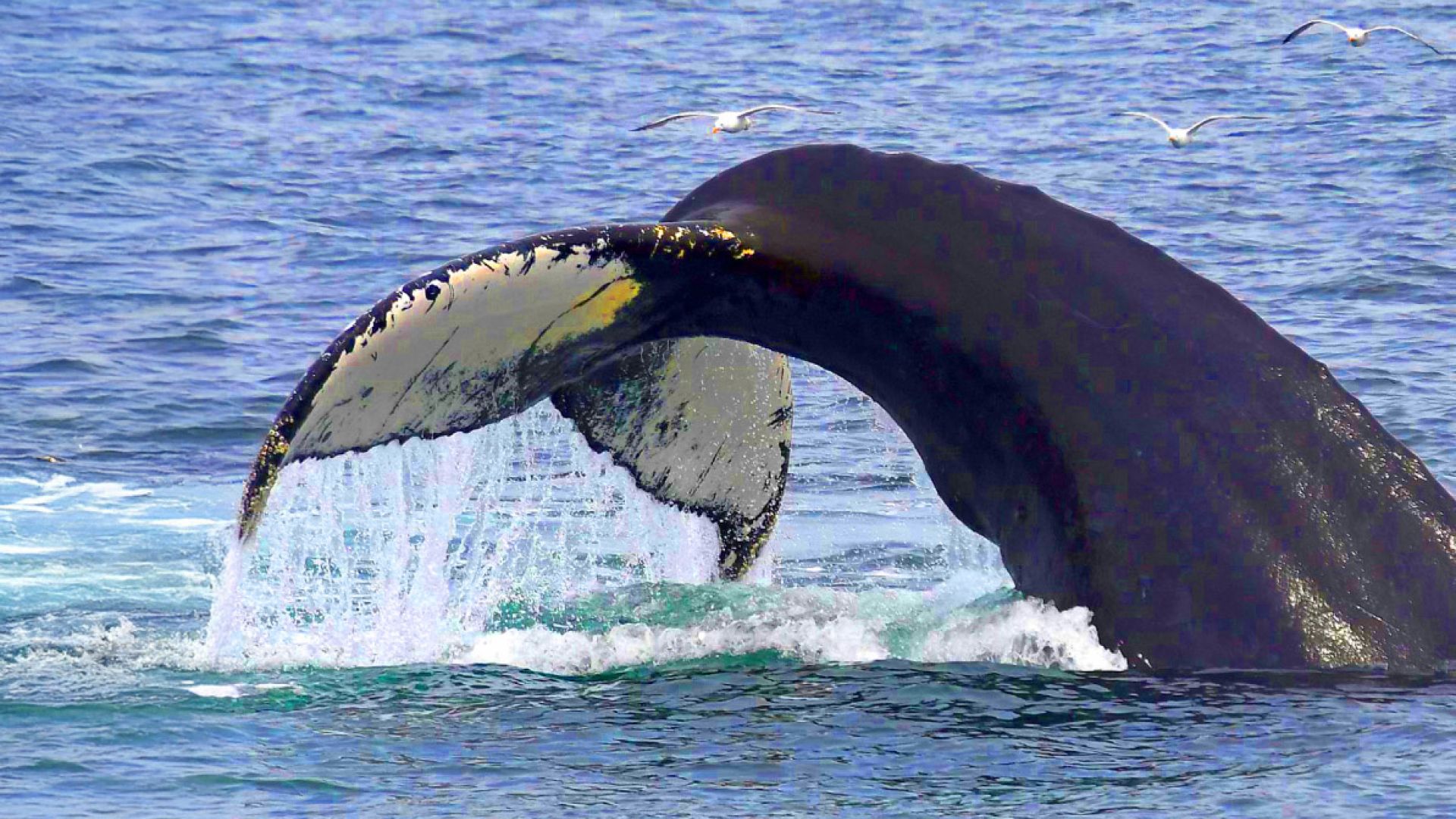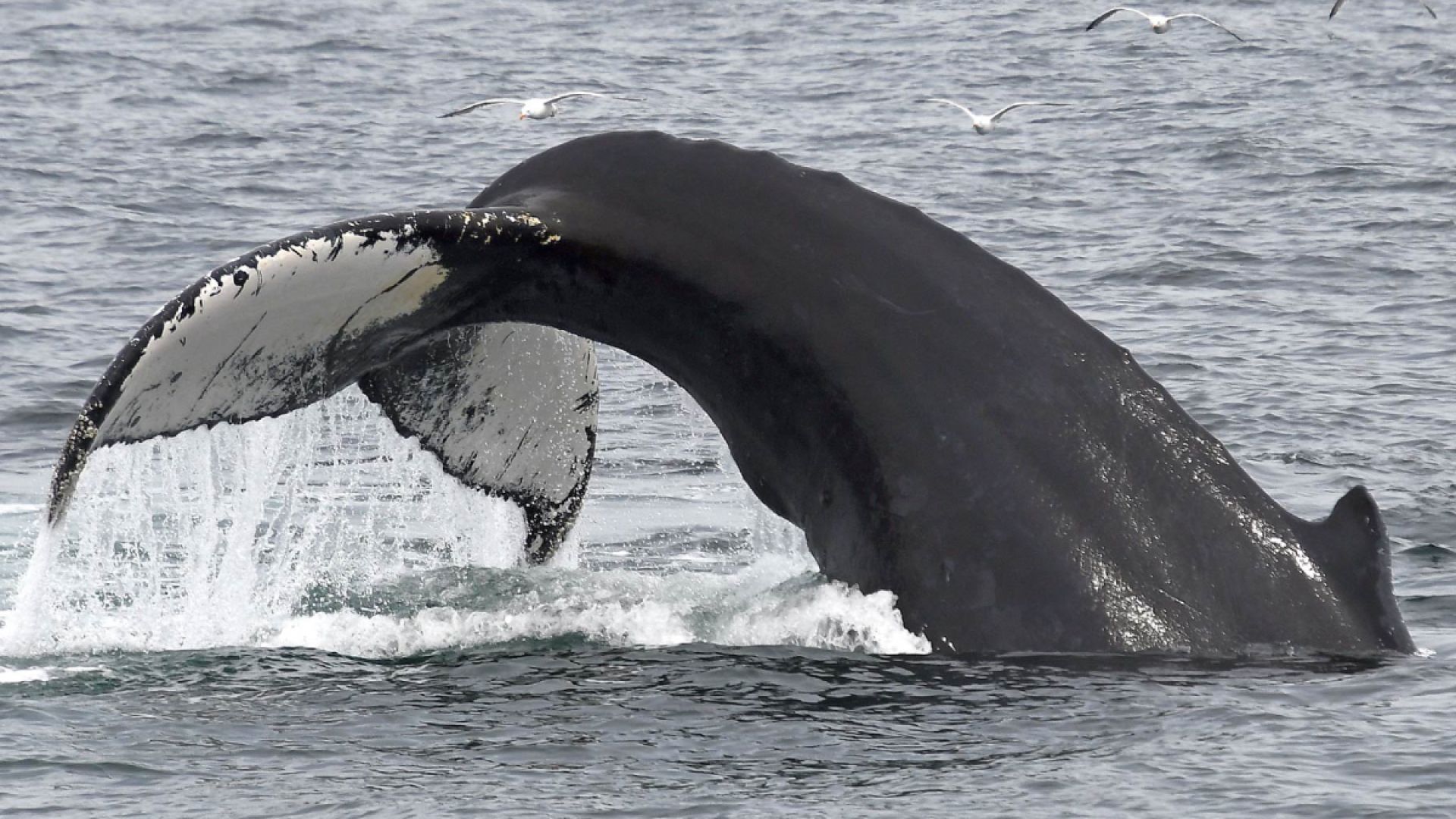Whale Watcher Cruise
Product ID: 78928
Supplied by: Hyannis Whale Watcher Cruises
Embark on a 3.5 to 4-hour whale watching adventure from Barnstable Harbor to Stellwagen Bank National Marine Sanctuary, offering opportunities to observe humpback, finback, and minke whales, as well as various dolphin species.
Whale watching is seasonally available based on whale migration which runs from mid-April through October.
Highlights
- Cruise to Stellwagen Bank, a top whale watching destination
- Sightings may include humpback, finback, and minke whales
- Frequent appearances by dolphin species and seabirds
- Spacious boat with sun decks and over 650 feet of rail space
- Comfortable indoor cabins with cushioned seating
- Snack bar serving food, soft drinks, beer, and wine
What's included
- 3.5 to 4-hour whale watching cruise
- Live narration by experienced captains and naturalists
- Access to indoor and outdoor viewing areas
- Food and beverages
- Gratuities
Additional Information
10 Tips for Enjoying Your Whale Watch
1. Be Rested Get a good night’s sleep. Being rested will keep you alert and guards against the effects of sun and sea. Remember: your whale watch is 3 ½ -4 hours long and you can’t go home early.
2. Stay Hydrated Drink plenty of water. This is especially important on hot summer days offshore. Being hydrated minimizes headaches, nausea, and can help prevent motion discomfort. Remember: sodas, juices and beer are not water. Drink water to stay hydrated.
3. Dress Warmly It will always be a minimum of 10 degrees cooler on the ocean. Choose warm and windproof layers that you can change as needed. In the spring and fall, winter hats and gloves will keep you comfortable. Go for function, not fashion.
4. Wear Appropriate Shoes Comfortable sneakers or walkers are best. High heels compromise balance on a boat; resist the urge. Flip-flops and sandals make your feet susceptible to stubbed toes. Wheeled shoes (aka: Heelys) are prohibited.
5. Bring Sunglasses The most important tool for viewing whales is Polarized sunglasses. Polarized sunglasses cut surface reflection, even on cloudy days, and enable you to see far more detail. You can buy them anywhere ($20 and up), but remember to buy Polarized.
6. Bring Sunscreen Direct sun and reflection from the water make sunscreen essential. Even on cloudy days it is possible to get sunburned. Look for waterproof, sweat-proof formulas with a SPF rating of 30 or higher. Apply liberally and frequently.
7. Bring Your Camera Any camera is better than no camera! If you can choose, bring a camera with a zoom feature to get close-ups. If you are a real pro, pack a polarizing filter, lens cloth, and both wide-angle and zoom lenses. Charge your batteries. Protect lens surface from whale breath. It has oils that are difficult to remove.
8. Personal Items Bring playing cards, games, books or electronic items, whatever you wish. You may bring snacks and drinks in cans or plastic bottles (no glass or alcoh
Cancellation policy
Up to 48 hours before the trip: Can reschedule at no charge, depending on availability.
Overview
Join Hyannis Whale Watcher Cruises for an unforgettable excursion to Stellwagen Bank, a world-renowned whale watching destination off the coast of Cape Cod. This 3.5 to 4-hour journey departs from Barnstable Harbor aboard a spacious, modern vessel designed for optimal wildlife viewing. The boat features three levels of observation space, including sun decks and over 650 feet of rail space, plus climate-controlled indoor cabins with cushioned seating and tables. Guests will enjoy narration from experienced captains and expert naturalists who offer insights into the region's marine life and conservation. Keep your eyes open for humpback, finback, and minke whales, as well as dolphins, seabirds, and other ocean wildlife. Onboard amenities include a full snack bar with breakfast, lunch, and drinks available for purchase.










